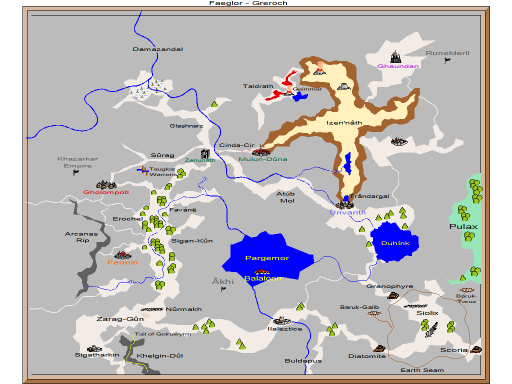
| Category | Wars | |||
| Period | 915 - 920 | |||
| Theater | Faeglor | |||
| Belligerents |
| |||
| Map | Greroch |
As the aggressors of this conflict, Runelderil's objective was Sigan-Kûn's's rich fungal farmlands.
In 920, Sigatharkin's leaders grew desperate when a second drow army appeared far behind the battle front, putting their home city under siege. They deployed sappers, undermining the highest point of the great cavern Zarag-Gûn. This resulted in a hole under the Nermanis Sea. Priests of Tarâk are often blamed for the disaster that ensued, their excuse was that this undermining, draining a sea upon them, was the only sure way of bringing an end to the war which they had no chance of winning. Runelderil's account of the episode says that their enemy did not realize that the 500' high roof of this cavern served as the bed of the Nermanis Sea. Mîmêk descendants say this is foolish talk, and that engineers miscalculated the amount of black powder and the strength of the bedrock. When the demolition went off, the entire sea drained into Greroch, destroying two armies and drowning many. For decades after, while the sea slowly drained, once great cities like Sigatharkin and Ilaleztice were underwater. The few survivors, thousands on both sides migrated northward, rebuilding their civilizations at Nurum-Maluk and Ghaundan.
The draining of the Nermanis Sea had severe consequences for the peoples that relied upon it. On the surface, the Nermaneans greatly depended on the sea for trade and fishing. They were forced to move on like those in the depths beneath. The draining also exposed the once submerged kuo-toan city of Gholompotl, forcing their migration.